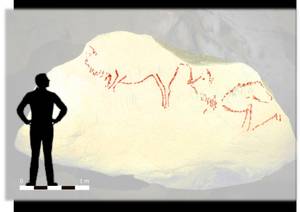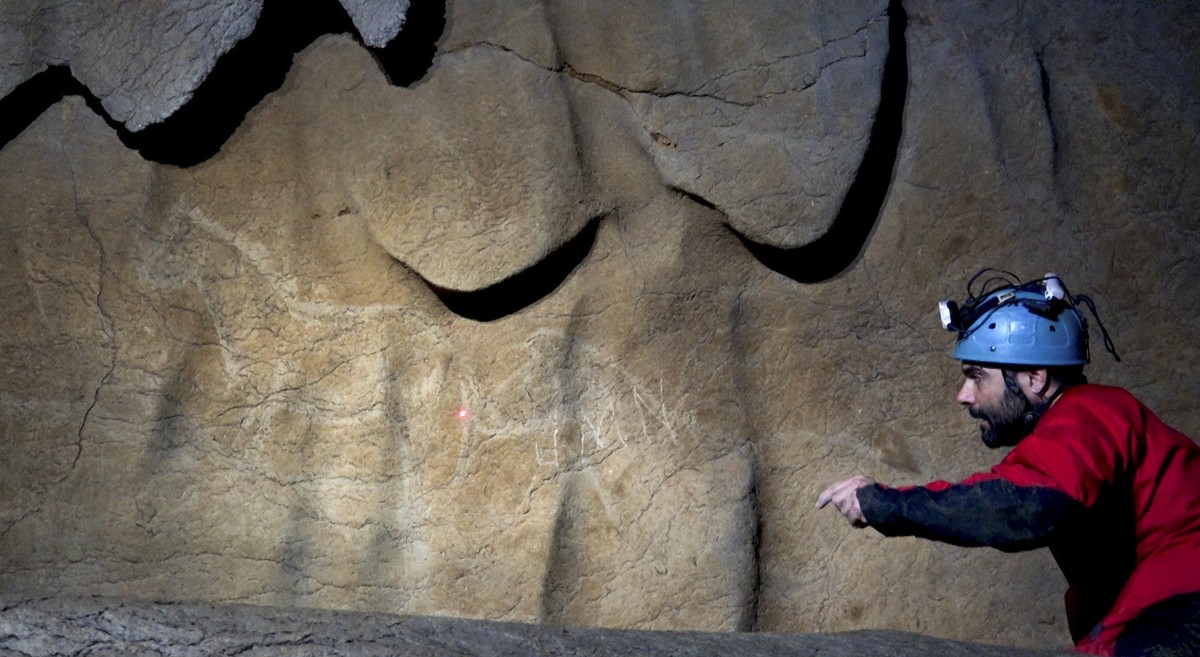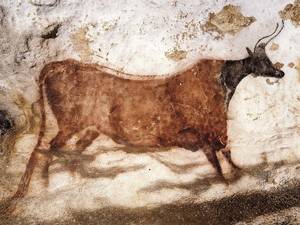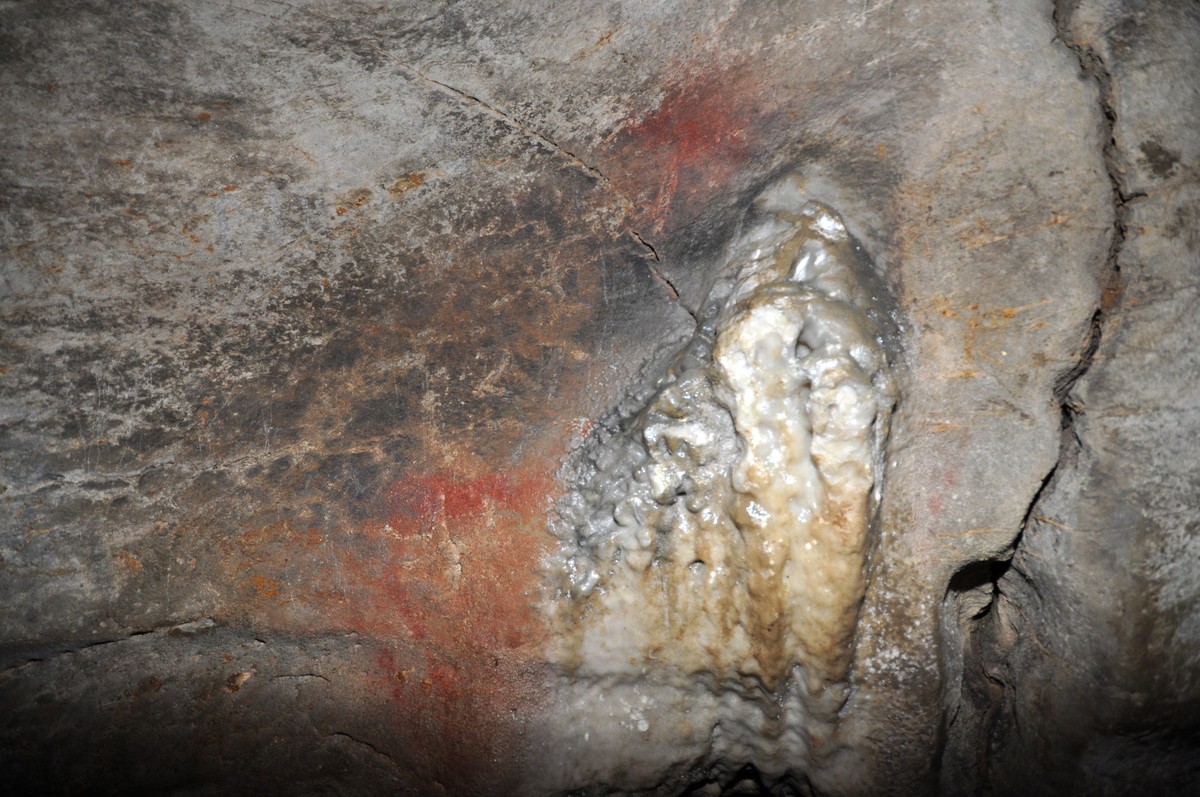Surprisingly, in the cave of Lumentxa have been found paintings of the Paleolithic
2014/05/23 Galarraga Aiestaran, Ana - Elhuyar Zientzia Iturria: Elhuyar aldizkaria
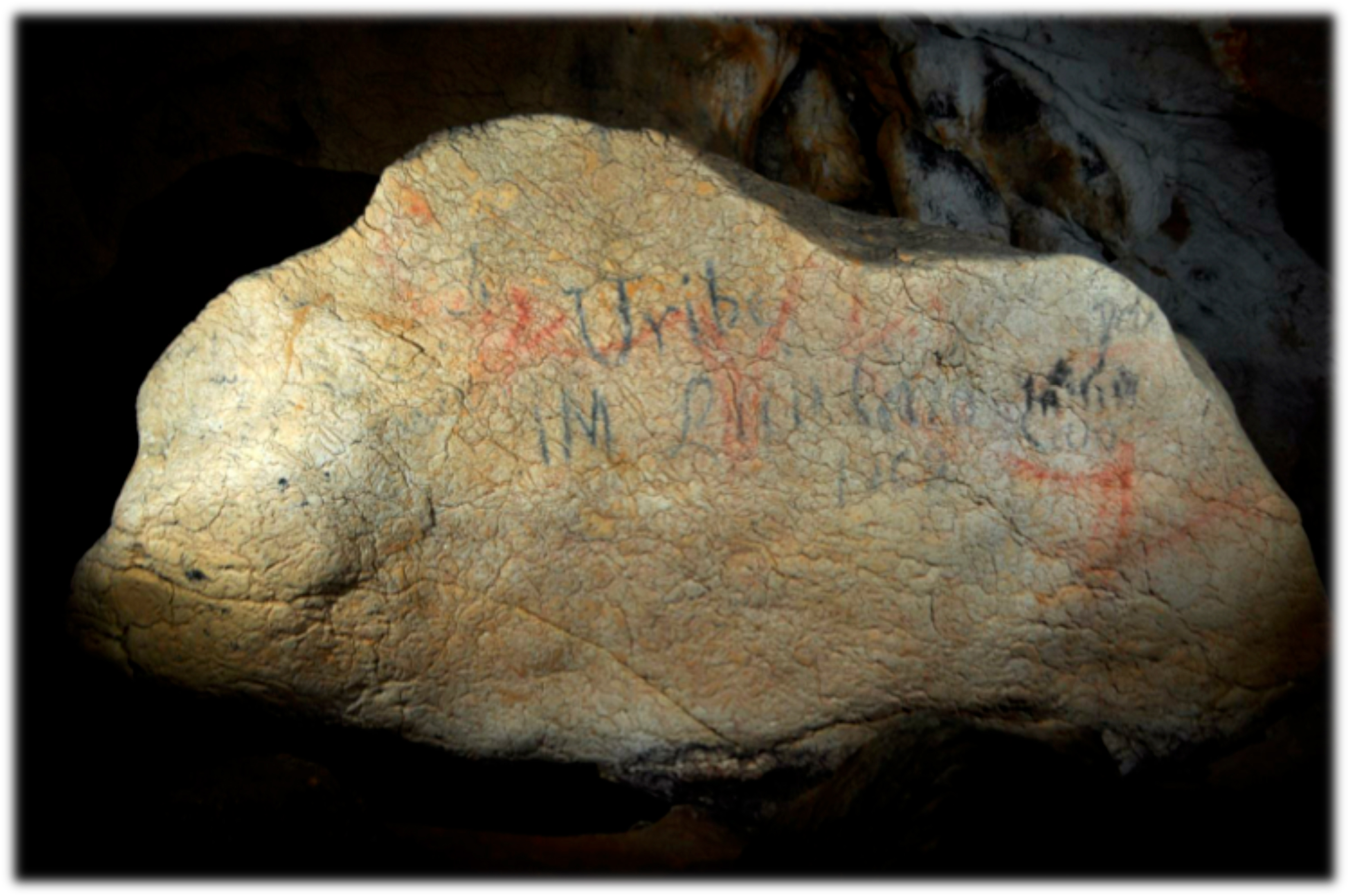
However, in addition to the location of the paintings, its characteristics make special the discovery, four times larger than those of Santimamiñe, painted ochres. “They are painted in a block of stones detached from the ceiling, adapted to the relief of the stone, of large size, of about 1.70 meters. Therefore, they are similar to the rock art of Ekain, Altxerri or Pyrenees; and closer, different from those existing in Santimamiñe, which are painted black and are four times smaller,” explains Garate.
Garate recalls the day he first saw. It was February 2012 and they were taking pictures of the caves to form a book. “When we went to Lumentxa we saw that the door was open and we entered to check the state of the interior. As the cave is close to the village, we find the garbage left by the people, and when we were crossing the cave to see how the entrance was on the other side, we were on the way.”
Garate recognizes that the eye to see the paintings should be “trained”. “It was excavated in 1926 by Joxe Miel Barandiaran, from where a lot of people have passed. But they are not easy to see, the scale is very large and they are adapted to the relief, about them written and have them... it is not surprising that they remain unnoticed. We, however, have seen it many times and thanks to it we realized that there was a bison there. We first saw the biggest and then the others.”
Subsequently, the research began, together with other archaeologists, such as Aitor Ruiz, of the University of Cantabria. “In fact, this type of research is always done by duplicate, that is, two groups do the same research because otherwise there is a risk of not seeing something.”
They have not been able to date, since they are not made of organic matter, but of ochres (so it is not possible to use the test of 14 of carbon), nor are they covered of calcite (they have not been able to use then the uranium/thorium method), but for their style they are clear that they are of the Madeleine period, that is, about 12.000-14.000 years ago.
Other jewelry Other jewelry
During excavation, archaeologists found other surprises. Garate highlights the ochre warehouse: “Until then I didn’t see him. Between the large block and other stones is a large warehouse of ochre of a meter of diameter. It’s logical to think that’s what was used to make paintings.”
In addition, put in a hole of a wall, they found the fever. “And yes, it has been created calcite in the skin and it cannot be removed,” said Garate.
Diego Garate is an archaeologist at the Museo de Arqueología de Bilbao and works at the Centro de Investigación sobre Evolución Humana CENIEH, Joseba Ríos, who together with Aitor Ruiz has published the study in Kobie magazine of the Diputación Foral de Bizkaia.

Gai honi buruzko eduki gehiago
Elhuyarrek garatutako teknologia




